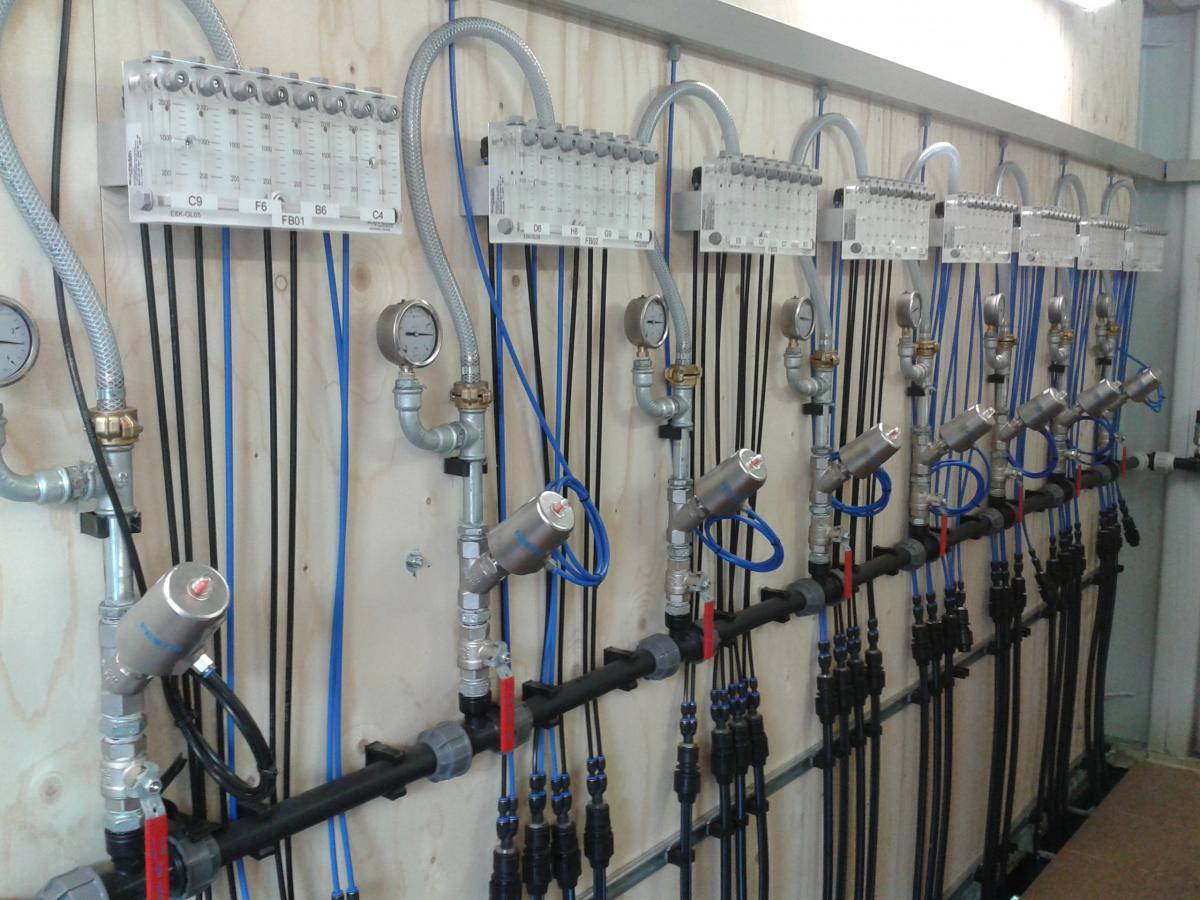Challenge
At the beginning of 2013, HMVT started on a large-scale naphtha remediation at an unmanned pump station in Soerendonk. The decades-old contamination had spread throughout the years over an area of many hectares to a depth of 20 metres below ground level. At the same time as the excavation phase, the entire pump station was renovated which resulted in logistical and planning challenges. In view of the present EX zones and the exposure of the naphtha pipeline (see photo) for the excavation of the core, carrying out the work safely was the number one priority. Afterwards we installed an intensive in-situ filter and pipe network, consisting of 80 air sparging (compressed air injection) filters, 10 soil vapour extraction filters and 10 nutrients filters both on the pump station site and the neighbouring field.

Solution
By first of all excavating the majority of the contamination, we managed to stop the spread towards the groundwater. We actively treated the mineral oils and aliphatic hydrocarbons dissolved in the groundwater with oxygen through an intensive network of air sparging filters. This had a stimulating effect on the ongoing natural aerobic degradation of the contamination as well as a stripping effect, whereby volatile components are stripped from the water and end up in the vapour phase. Contaminated vapours were then collected through a network of soil vapour extraction filters and purified using activated carbon filtration.

Results
Through the excavation of the core at the pump station site we were able to remove 99% of the contamination load present. The remaining 1% was removed within six months through active in-situ remediation using air sparging, soil vapour extraction and administering nutrients.
In the neighbouring field where only air sparging filters had been placed, the soil was provided with oxygen by means of an intermittent regime. Within six months of the start of the remediation work the objective (< intervention value) was achieved for 95% of the site. Within the same period the objectives (50% removal rate including a downward trend) underneath a poorly permeable clay layer at 14 m-gl were achieved.

